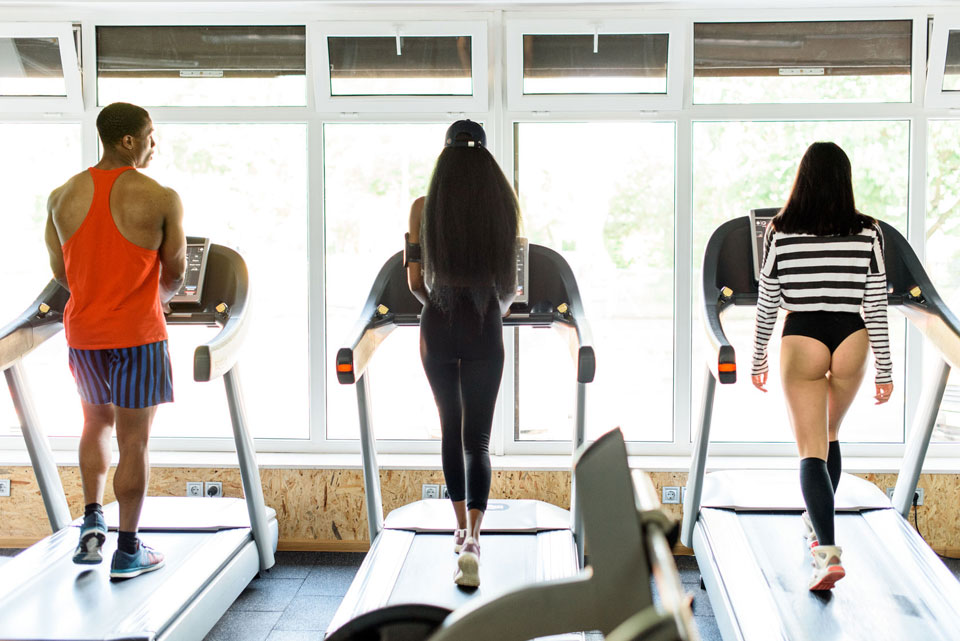Society likes to think it grows more enlightened with every generation, but in fact, there are gender-specific areas in which men and women are still coming to grips with — perhaps the most serious of which is the topic of physical violence perpetrated on women throughout the world.
One of the biggest controversies associated with this issue has to do with whether or not the “messages” men receive when they encounter seductively-dressed women are justification for unwanted sexual advances.
It’s a balancing act. Western media says, “If you want to be noticed, show some skin.” In Eastern societies, the contradiction between appropriate dress and social customs is less ambiguous: there’s much less chance a Singaporean women appears in public looking like she’s on the cover of an X-rated magazine.
Of course, every woman on Earth can be judged by what she wears, whether out on the town or running along an urban jogging path, but since all women want to stay safe, the more you know about how to do that, the safer you will be.
More common than you may imagine
Has the world gone mad? It seems so. The United Nations produced one of the most extensive white papers on international rape ever published a few years ago.
Focused on the Pacific Rim, researchers explored regional attitudes and came to startling conclusions after querying 10,000 men about how they perceive signs women send when they dress.

Why do men use provocative dress as an excuse to override a woman’s protestations? According to the UN study, this has nothing to do with fashion: rather, study participants said that they weren’t raised to discern lines of consent.
Further, half of all respondents were only in their teens when they first tested the boundaries of advances made to non-consenting females and most said that they lacked the sex education necessary to help them differentiate between consensual and nonconsensual signals.
More men than you might imagine were taught that they have a right to women’s bodies, according to the survey, and that this right is seen as an entitlement. These responses show that there is something much deeper than provocative dress going on in Asian societies.
The cultural aspects of assault
In a frank statement that underpins the UN study just described, one of the most glaring facts about this controversial topic is that “rape typically goes unpunished in Southeast Asia.”
This sweeping statement was issued by the Rape, Abuse and Incest National Network (RAINN) and supports the aforementioned theory that large numbers of men are raised to believe sex should be an entitlement, even when a woman says “No.”
Government reinforces this belief every time it decides not to prosecute rape and assault cases, therefore, why would men feel any obligation to stop making untoward advances when there’s so little chance they will be apprehended or serve jail time?
In summary, it’s not dressing provocatively that triggers rape and assault; it’s a lack of education paired with the way boys are brought up that continues the status quo.
Is the fashion industry to blame?
Not exactly. Blogger Robin Massowd discusses the contradiction that exists between females wanting to look hot and men taking that as a sign that women are eager for physical advances.
In fact, Massowd confirms what many already know: blaming victims has become a blood sport.
The most telling aspect of her post is a response sent by a man who wrote,
“the problem does lie with men…and conversation should be centred on how to raise (and, if they’re already grown, how to teach) men to respect women’s boundaries, regardless of how they’re presented.”

In summary, placing blame on fashion and/or the fashion industry is nothing but window dressing to hide deeply ingrained behaviours that lie within the social fabric of many eastern cultures.
Location, location, location
Mary Dickson called her article “A Woman’s Worst Nightmare” when the Salt Lake City, Utah writer described for America’s Public Broadcasting System the story of a woman who went off on her regular 5:45 a.m. run and was taken at knife-point off her trail and brutally assaulted.
This incident took place 20 years ago, yet Dickson recalls it as the seminal moment in which she realised how vulnerable women are when they’re alone.
She wound up producing a documentary film on the subject of rape after hearing this jogger’s story. Turning to an anthropologist-friend for answers, Dickson was told that women will “forever be prey” due to the way men and women are wired.
What does this say to women who travel alone, run alone and live alone? That women must prioritise taking precautions rather than worrying that the outfit they choose could trigger unwanted advances. This is why women who run solo are particularly vulnerable.

11 ways to protect yourself while running
Every time you plan to run solo, you can prepare for anything if you follow these tips:
- If one or more makes you feel more secure, bring along a loud whistle, kazoo or novelty air blaster on your run.
- Choose a familiar location for your conditioning run so you’re aware of proximity to roads and/or buildings.
- Remain acutely aware of your surroundings. This can be hard to do if you’re easily distracted. Learn to catch yourself when your mind wanders.
- Tell someone where you’re going. Call a friend or your mum and leave a voice mail that says, for example, you’re heading for a reservoir run and expect to be back in two hours.
- Bring your mobile phone along and make sure the battery is charged. Test your phone at various points to make sure you get reception.
- Wear reflective or distinct gear so anyone who passes you recalls seeing you on the trail.
- Consider the fact that women listening to loud music courtesy of ear buds are at greatest risk because the volume may prevent you from knowing that someone is approaching you from behind.
- Take a self-defence class. It’s worth your time — especially if you run alone most often.
- Practice yelling. Declarative statements uttered in a loud voice, that include “Leave me alone” or “Back off,” can thwart a potential attack. Don’t worry about being rude; worry about staying safe.
- Run like the wind to escape if you need a strategy for getting away from someone who frightens you.
- Fight back if you are assaulted. Focus on the eyes and genital area. Run with your keys in your hand, one key sticking out from between your fingers, so you have a weapon.
Have you ever felt threatened while running alone in a desolate area? What defensive action did you take to remove yourself from this threat?





